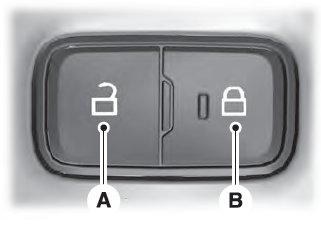Lincoln Aviator: Front Seats / Removal and Installation - Front Seat Backrest Panel
Special Tool(s) / General Equipment
| Interior Trim Remover |
Removal
NOTE: Driver seat shown, passenger seat similar.
-
NOTE: Driver seat with power head restraint shown, other seats similar.
Move the front seat to the full upward and forward position.
.jpg) |
-
Depower the SRS.
Refer to: Supplemental Restraint System (SRS) Depowering (501-20B Supplemental Restraint System, General Procedures).
-
Release the front seat backrest panel straps.
-
Detach the heater mat wiring harness retainer.
-
Detach the side airbag electrical connector.
-
Release the backrest panel straps.
-
Detach the heater mat wiring harness retainer.
.jpg) |
Seats with power head restraint
-
NOTICE: The backrest panel finish can be easily marred or torn, use care when working around it.
Raise and partially separate the head restraint rear cover enough to disengage the clips from the back panel.
Use the General Equipment: Interior Trim Remover
.jpg) |
-
NOTICE: The backrest panel finish can be easily marred or torn, use care when working around it.
On both sides, grasp the backrest panel where it meets the module trim, pull to release the clips and separate the backrest panel from the module trim.
.jpg) |
-
NOTICE: The backrest panel finish can be easily marred or torn, use care when working around it.
On both sides, using the interior trim remover, place it in between the plastic substrate and the clip, pry and detach the module clips from the backrest panel windows.
Use the General Equipment: Interior Trim Remover
.jpg) |
-
Pull out at the bottom, release the clips and detach the backrest panel from the backrest frame.
.jpg) |
-
Pull out at the sides of the backrest panel.
.jpg) |
-
Pull down and out and remove the backrest panel.
.jpg) |
Seats without power head restraint
-
NOTICE: The backrest panel finish can be easily marred or torn, use care when working around it.
On both sides, grasp the backrest panel where it meets the module trim, pull to release the clips and separate the backrest panel from the module trim.
.jpg) |
-
NOTICE: The backrest panel finish can be easily marred or torn, use care when working around it.
On both sides, using the interior trim remover, place it in between the plastic substrate and the clip, pry and detach the module clips from the backrest panel windows.
Use the General Equipment: Interior Trim Remover
.jpg) |
-
Pull out at the bottom, release the clips and detach the backrest panel from the backrest frame.
.jpg) |
-
Pull out at the sides of the backrest panel.
.jpg) |
-
Pull down and out and remove the backrest panel.
.jpg) |
Installation
-
To install, reverse the removal procedure.
-
Repower the SRS.
Refer to: Supplemental Restraint System (SRS) Repowering (501-20B Supplemental Restraint System, General Procedures).
 Removal and Installation - Front Seat Backrest Cover - Vehicles With: Multi-Contour Seats
Removal and Installation - Front Seat Backrest Cover - Vehicles With: Multi-Contour Seats
Special Tool(s) /
General Equipment
Interior Trim Remover
Removal
NOTE:
Driver seat shown, passenger seat similar.
Remove the front seat...
 Removal and Installation - Front Seat Control Switch
Removal and Installation - Front Seat Control Switch
Removal
NOTE:
Driver side shown, passenger side similar.
Remove the front door trim panel.
Refer to: Front Door Trim Panel (501-05 Interior Trim and Ornamentation, Removal and Installation)...
Other information:
Lincoln Aviator 2020-2025 Service Manual: Description and Operation - Passive Anti-Theft System (PATS) - Overview
Overview The PATS deters the vehicle from theft by preventing the vehicle from starting unless a valid programmed key is detected inside the vehicle when the START/STOP button is pressed. The PATS does not disable an already running vehicle. Backup Starting NOTE: There are certain areas within the vehicle where the passive key may not be detected and the message center displays No Key Detected...
Lincoln Aviator 2020-2025 Service Manual: General Procedures - Battery Drain Check
Check NOTE: No factory-equipped vehicle should have more than a 25 mA (0.025 amp) – 50 mA (0.050) draw depending on the vehicle's accessories. Check for current drains on the battery in excess of 25 mA (0.025 amp) – 50 mA (0.050) with all the electrical accessories off and the vehicle at rest for at least 75 minutes (depending on region)...
Categories
- Manuals Home
- Lincoln Aviator Owners Manual
- Lincoln Aviator Service Manual
- Disabling Auto-Start-Stop
- Changing the Front Wiper Blades - Vehicles With: Heated Wiper Blades
- Description and Operation - Jacking and Lifting
- New on site
- Most important about car
Locking and Unlocking the Doors from Inside

Locking the Doors
Press the lock switch on the door interior trim panel. The doors can no longer be released using the exterior door handle switches and the luggage compartment locks.
